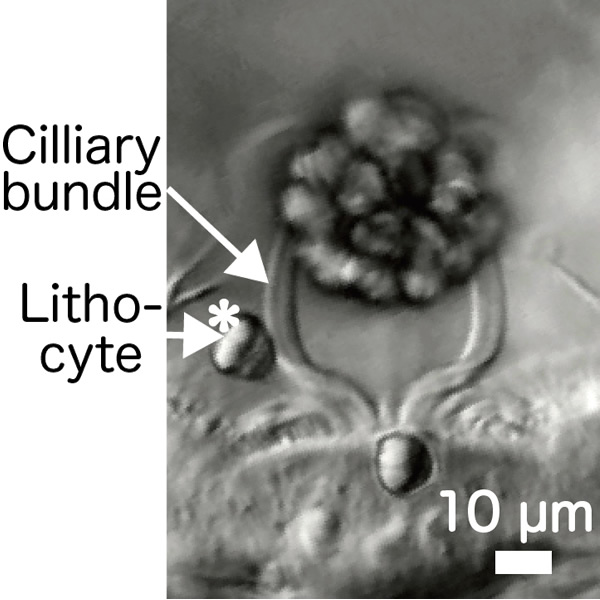Grant-in-Aid for Transformative Research Areas (A)
Publicly Offered Research:2022FY
Proto-intelligence in cilia: how cilia can recognize the size of cargo being transported
- Principal
investigator - Naoki NodaDivision of Medical Science (Biology), Department of Liberal Arts and Sciences, Nihon University School of Medicine
Ctenophores are gelatinous marine zooplankton with eight rows of locomotory ciliary comb plates and are generally called “comb jellies”. Recent reports have shown that ctenophores branched off relatively early in the tree of animal life. Despites their phylogenetic position, they have gravity sensing organ (statocyst). Their statocyst contains a single massive statolith, which consists of numerous living cells (lithocytes), each with a large concretion. The statolith is held upon the tips of four groups of cilia. The lithocytes are budded off from the epithelial cells, but how they come to be stuck together into a statolith at the tops of the balancers had remained a mystery. We had shown that released lithocytes are transported up the surface of the bundle of cilia to build the statolith and lithocytes are passively transported by an active process of the ciliary surface (* in a figure). The cargo, similar in size to lithocytes, were shown to be transported preferentially to the tip like lithocytes and the direction depends on the size of the cargo. These results suggest that cilia can recognize the size of cargo being transported. In this research project, we will investigate the nature of the molecular machinery of cargo-size recognition to build the sensory organ of ctenophores.

 Ethological dynamics in diorama environments
Ethological dynamics in diorama environments